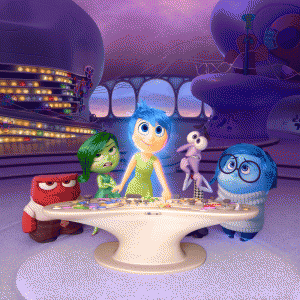In space, no one can hear you scream. Well, not quite. All you need to do is fix a defunct Mars rover from the ‘90s and make contact with Earth using an ASCII code alphabet system. That’s just one of the many things Mark Watney (Matt Damon) finds himself doing when he’s left by his crew who believe him dead and abandon him on the Red Planet in “The Martian” (released Oct. 2). The result is director Ridley Scott’s bleak take on space and the future with his best sci-fi movie since “Alien.”
Peter Weir’s novel is one of the most grounded and engaging science fiction novels in a long time, up there with the works of the great Michael Crichton. The adaptation is not only faithful to the source material, but its changes actually make the adaptation much better, particularly the ending.
In the future world of “Martian”, NASA has been able to send manned missions to Mars as part of the organization’s Ares program. During the third mission, a powerful storm hits the crew’s habitat and they’re forced to evacuate the planet. Here’s the rub: one member (Watney) is struck by a piece of debris before he can reach the ship and is left for dead. Not that Commander Melissa Lewis (Jessica Chastain) or the rest of her crew wanted to, but they all seriously believe him to be no longer among the living.
Turns out Watney’s alive and must survive until NASA can figure out a way to bring him home. And so begin the “Robinson Crusoe” and “Castaway” comparisons that are bound to be brought up. Luckily, Mark is a botanist so he’s able to grow crops on Mars using vacuum sealed potatoes and the bodily matter (don’t make me spell it out) left by the crew. He records his progress via video logs (that have got nothing on Captain Kirk).
Don’t expect too much weepy drama because Watney—both in the book and movie—is a sophomoric jokester nerd who has vast amounts of knowledge of Aquaman and Iron Man as he does on plants, engineering and rationing food. Although he’s always one step away from dying millions of miles from Earth, a quip is never too far around the corner. In this regard, Damon captures the spirit of his literary counterpart, never taking his imminent doom too seriously.
Unfortunately for him, however, all he has for entertainment are “Happy Days” re-runs and Commander Lewis’s collection of disco music, which perfectly punctuate certain scenes with ironic hilarity. Extremely relevant songs from ABBA, Thelma Houston, David Bowie and The O’Jays all pop up and Harry Gregson-William’s score is full of poignant adventurous cues. Even Gloria Gaynor gets her moment in the sun. Go ahead and guess which one of her iconic songs is featured in the end credits.
While we follow Mark on Mars, the movie tells a parallel story on earth as humanity comes together to figure out of a way to get their man home and the cast is second to none. Some standouts are Jeff Daniels who plays no-nonsense NASA director Teddy Daniels, while Kristen Wiig tones down her Saturday Night Live zaniness to portray the organization’s uptight media relations liaison Annie Montrose, an aspect that reminded me of Barry Levinson’s “Wag The Dog.” Chiwetel Ejiofor, Sean Bean, and Mackenzie Davis also star as NASA employees, but it’s Donald Glover (aka Childish Gambino) as Rich Purnell, an eccentric astrodynamicist who comes up with a crazy, yet genius plan to recuse Mark. It seems Glover took note of his “Community” co-star Danny Pudi’s asocial filmmaker Ramzi Abed.
Kate Mara, Sebastian Stan, Michael Pena and Aksel Hennie are Mark’s crew spending their time in spaceships and planet habitats that make space travel look exciting and hopeful. They’re not the cramped dystopian crannies of the Nostromo. More importantly, no foreign entities are exiting people’s bodies in a spray of blood and guts.
The special effects are impressive: from the desert landscape of Mars to the spinning Ares spaceship called the Hermes, “The Martian” draws inspiration from movies like “2001: A Space Odyssey,” “Interstellar” and “Elysium.” And while Damon and Chastain both starred in “Interstellar,” this is the better of the two movies with heart and eye candy to spare. While Scott’s “Prometheus” may have been lackluster, the “Blade Runner” director shows us he can still take on the daunting sci-fi genre and win big.
All in all, “The Martian” is an achievement on both a technical and a personal level. It’s the kind of movie that restores your faith in humanity and the space program, a kind of high-wire spectacle propaganda that a Cold War-era America could only dream of to inspire the country into beating the Commies to space. Seeing as the plot has us work with China to rescue Mark, I’d say we’ve moved past that particular race to the final frontier.
The post Matt Damon is out of this world in ‘Martian’ appeared first on The Triangle.




